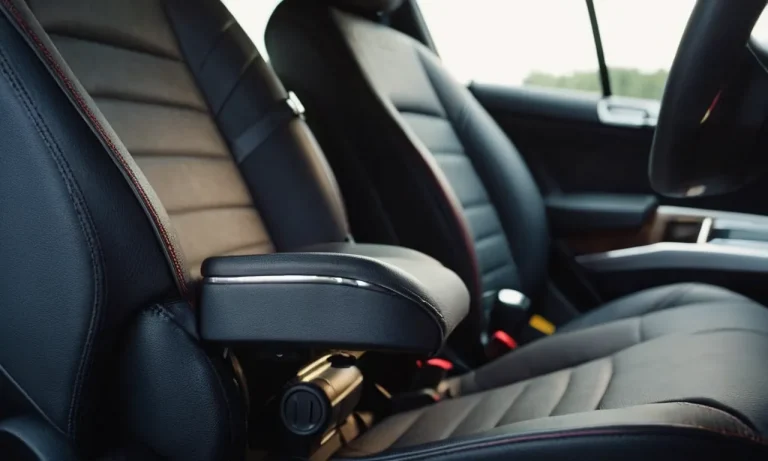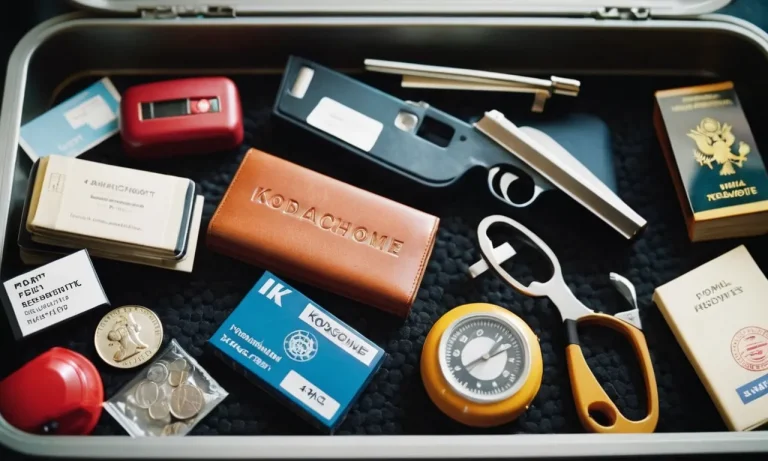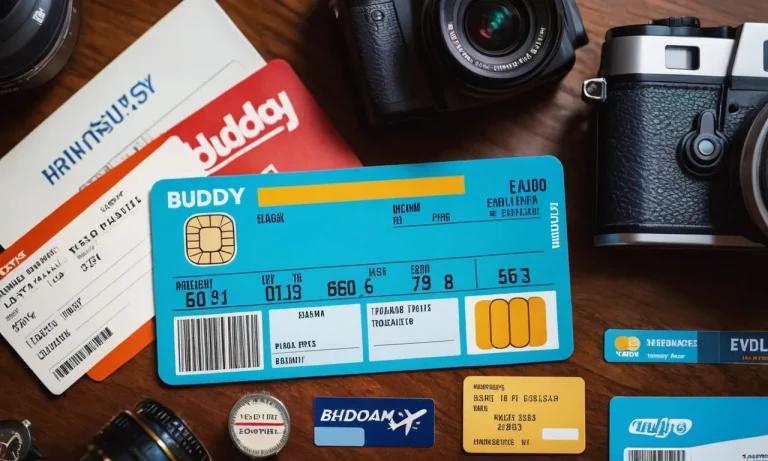Dual flush toilets offer a great way to conserve water, but the two buttons can be confusing. Should you push the small or large button? Making the right choice ensures proper flushing and water savings.
If you’re short on time, here’s a quick answer:
Use the smaller button for liquid waste and the larger button for solid waste. The larger button provides more water flow for flushing solids down the drain.
This comprehensive guide will cover everything you need to know about operating dual flush toilet buttons correctly, from understanding the flushing mechanisms to troubleshooting common problems.
How Dual Flush Toilet Buttons Work
The small button has reduced the water flow
Dual flush toilets are designed with two separate buttons, each serving a specific purpose.
The small button, usually located on the top or side of the toilet tank, is used for flushing liquids or when less water is needed.
When pressed, this button activates a reduced water flow that efficiently removes waste without wasting unnecessary water.
This not only helps conserve water but also reduces your water bill, making it an environmentally and financially friendly choice.
Large button has full water flow
The large button, on the other hand, is used for flushing solid waste or when more water is required.
When pressed, this button activates a full water flow that provides the necessary force to effectively flush away solid waste.
By having the option to choose between different water flow levels, dual flush toilets offer a more efficient and versatile flushing system compared to their single-flush counterparts.
This means you can customize your flushing experience based on your specific needs, saving water when possible without compromising on performance.
Buttons activate different siphon mechanisms
Behind the scenes, the small and large buttons of a dual flush toilet activate different siphon mechanisms to achieve the desired flushing action.
The small button triggers a partial flush, where a smaller amount of water is released into the bowl.
This partial flush is sufficient for removing liquids and light waste.
On the other hand, the large button activates a full flush, which involves a larger volume of water being released into the bowl.
This full flush ensures the effective removal of solid waste.
The dual flush system is designed to provide the right amount of water for each type of waste, resulting in efficient and thorough flushing.
When to Use the Small Button
Knowing when to use the small button on a dual flush toilet is essential to maximize water efficiency.
Here are a few situations where using the small button is appropriate:
For liquid waste only
The small button on a dual flush toilet is specifically designed for liquid waste. When you need to flush after using the toilet for urination, it is recommended to use the small button.
This helps conserve water as the small flush only uses a fraction of the water compared to the larger flush.
After urinating
Using the small button after urinating is not only eco-friendly but also helps to maintain the cleanliness of the toilet.
Since liquid waste doesn’t require as much water for flushing, the small button provides an efficient solution for this purpose.
It’s a simple action that can make a significant impact on water conservation.
If bowl contents are light
Another instance where the small button is suitable is when the bowl contents are light. If you only see a small amount of waste in the toilet bowl, there’s no need to use the larger flush.
By opting for the small button, you are using just enough water to effectively flush away the waste, saving water in the process.
Remember, using the small button appropriately not only helps in conserving water but also reduces your utility bills. It’s a small step towards a more sustainable future.
When to Use the Large Button
Understanding when to use the large button on a dual flush toilet is essential for efficient water usage and maintaining a clean and hygienic bathroom environment.
Here are a few situations where it is appropriate to opt for the large button:
For solid waste
The large button on a dual flush toilet is specifically designed for flushing solid waste.
When nature calls and you need to dispose of solid waste, using the large button ensures a powerful and thorough flush, effectively removing waste from the bowl.
After a bowel movement
After a bowel movement, it is important to use the large button for flushing.
Solid waste can be more challenging to flush compared to liquid waste, and the large button provides the necessary water volume and pressure to effectively clear the bowl.
If bowl contents are heavy
If the bowl contents are particularly heavy, such as after using excessive amounts of toilet paper or disposing of sanitary products, it is advisable to use the large button.
This will ensure that an adequate amount of water is used to flush away all the contents, preventing any potential clogs or blockages.
By using the large button in these situations, you can be confident that your dual flush toilet is functioning optimally and efficiently.
Remember, using the appropriate button for the type of waste being flushed not only helps to maintain a clean and odor-free bathroom but also contributes to water conservation efforts.

Getting the Most Water Savings
When it comes to using dual flush toilet buttons, the main goal is to achieve maximum water savings.
By following a few simple tips, you can ensure that you are using your dual flush toilet correctly and minimizing water waste.
Use small flush when possible
The small flush option on your dual flush toilet is designed for liquid waste and uses significantly less water than the large flush.
Whenever you have liquid waste to dispose of, opting for the small flush can save gallons of water over time.
Not only will this help conserve water resources, but it will also reduce your water bill. So, next time you only need to flush away some pee, don’t hesitate to choose the small flush!
Don’t just default to large flush
While the large flush is meant for solid waste, it’s important not to default to it every time you use the toilet.
By being mindful of what you are flushing, you can make a conscious decision to use the small flush when appropriate.
For instance, if you’ve only used a small amount of toilet paper, there’s no need to waste extra water with a large flush.
Train yourself to consider whether the large flush is really necessary before automatically pressing the button.
Adjust behavior to be more efficient
In addition to using the appropriate flush option, you can also adjust your behavior to be more efficient when using a dual flush toilet.
For example, instead of flushing multiple times, try to minimize the number of flushes by using less toilet paper or by breaking up solid waste before flushing.
These small changes can add up to significant water savings over time.
Remember, using a dual flush toilet correctly not only helps conserve water and reduce your water bill, but it also contributes to a more environmentally friendly lifestyle.
So, make it a habit to maximize your water savings by using the small flush, avoiding unnecessary large flushes, and adjusting your behavior to be more efficient.
Troubleshooting Dual Flush Issues
If small flush doesn’t work, try large flush
If you find that the small flush button on your dual flush toilet isn’t working properly, don’t panic. This is a common issue that can be easily resolved.
One possible reason for the small flush not working is that there may not be enough water in the tank to create sufficient force for a successful flush.
In such cases, it’s recommended to try using the large flush button instead.
The large flush button releases a higher volume of water, which can help dislodge any debris that may be causing the blockage. Give it a try and see if this resolves the problem.
Make sure both buttons fully depress
Another potential issue with dual flush toilets is that one or both of the buttons may not fully depress when pressed.
This can prevent the flush mechanism from activating, resulting in an incomplete or ineffective flush.
To fix this problem, make sure to press both buttons firmly and ensure that they fully depress.
If you find that one button is not working properly, it may be worth checking if there is any debris or obstruction preventing it from fully depressing.
Clean the buttons and surrounding area if necessary, and try again.
Check for clogs or malfunctions
If you’ve tried both the small and large flush buttons and are still experiencing issues with your dual flush toilet, it’s time to investigate further.
Start by checking for any visible clogs in the toilet bowl or waste pipe.
Use a plunger or a toilet auger to remove any blockages that may be causing the problem. If you don’t see any visible clogs, there may be a malfunction with the flush mechanism itself.
In this case, it’s best to contact a professional plumber who can diagnose and repair the issue.
Remember, proper maintenance and regular cleaning of your dual flush toilet can help prevent many common issues from occurring.
If you’re unsure about how to troubleshoot a specific problem, it’s always a good idea to consult the manufacturer’s instructions or seek professional help.
By taking care of your dual flush toilet and addressing any issues promptly, you can ensure its optimal performance and longevity.
Conclusion
Using dual flush toilet buttons properly is crucial for water conservation and effective flushing. Follow this guide to understand when to use the small versus large button based on bowl contents.
With some practice, dual flush toilets allow you to save water without sacrificing performance.






